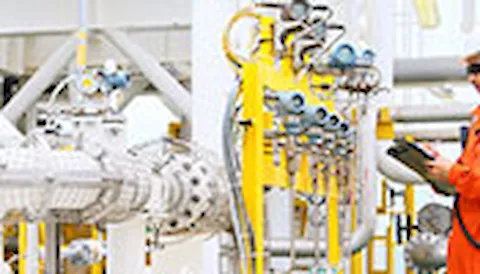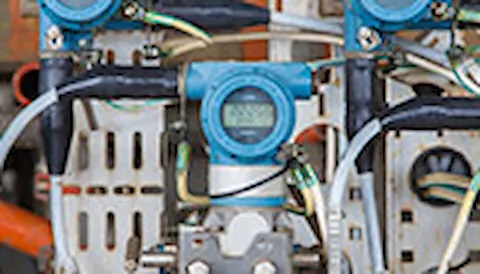IECEx Product Certification Scheme
The IECEx System is an international certification scheme operated by the IEC which manufacturers can use as a basis of demonstrating third-party conformity assessment to recognized international standards.
IECEx Product Certification Scheme
The IECEx System is an international certification scheme operated by the IEC which manufacturers can use as a basis of demonstrating third-party conformity assessment to recognised international standards. A number of international markets accept an IECEx Certificate of Conformity for market access directly and in others in can be used to demonstrate that the product complies with international standards in support of local certification. Technically, the standards and technical requirements used to demonstrate conformity are almost identical for ATEX and IECEx and a product can usually be assessed for both schemes at the same time.
For both experienced equipment manufacturers and new entrants to this sector the conformity assessment route and process can be complex. At DNV we operate a network of experts globally who are available to support you through the certification process – use the buttons to the right of the page to contact one of our experts today.
Our IECEx Certification Body and ATEX Notified Body for Hazardous Area services are issued by our joint-venture entity DNV Nemko Presafe AS in Oslo, Norway.
Relevant Directives / Schemes
IECEx – The IEC System for Certification to Standards relating to Equipment for use in Explosive Atmospheres
Basic Technical Concepts
Hazardous Areas (Potentially Explosive Atmospheres) are defined in terms of Zones and Safe Areas under relevant IEC (for IECEx) and EN (for ATEX) standards depending on the expected frequency and duration of an explosive atmosphere being present.
Zone 0 | An area in which an explosive gas atmosphere is present continuously or for long periods or frequently. |
Zone 1 | An area in which an explosive gas atmosphere is likely to occur periodically or occasionally in normal operation. |
Zone 2 | An area in which an explosive gas atmosphere is not likely to occur in normal operation, but if it does occur, it will exist for a short period only. |
Zone 20 | An area in which an explosive dust atmosphere, in the form of a cloud of dust in air, is present continuously, or for long periods or frequently. |
Zone 21 | An area in which an explosive dust atmosphere, in the form of a cloud of dust in air, is likely to occur in normal operation occasionally. |
Zone 22 | An area in which an explosive dust atmosphere, in the form of a cloud of dust in air, is not likely to occur in normal operation but, if it does occur, will persist for a short period only. |
Safe or Non-Hazardous Area | An area in which an explosive gas, or dust atmosphere is not expected to be present in quantities such as to require special precautions for the construction, installation and use of equipment. |
In addition to Zones, Hazardous Areas are further subdivided by Gas or Dust Groups depending on the explosion properties of the gas or dust and Temperature Classes depending on the auto-ignition temperature of the explosive atmosphere.
Gas or Dust Group | Representative Gas or Dust |
I (mines susceptible to firedamp) | Methane |
IIA | Propane |
IIB | Ethylene |
IIC | Acetylene & Hydrogen |
IIIA | Ignitable fibres/flyings, such as cotton lint, flax & rayon |
IIIB | Non-conductive dusts, such as flour, grain, wood & plastic |
IIIC | Conductive dusts, such as magnesium |
Surface Temperature °C | Equipment Temperature Class |
< 450°C | T1 |
< 300°C | T2 |
< 200°C | T3 |
< 135°C | T4 |
< 100°C | T5 |
< 85°C | T6 |
Equipment for use in Potentially Explosive Atmospheres is specified by an Equipment Category (ATEX) or an Equipment Protection Level or EPL (IECEx) which defines the level of safety of the equipment and the zone in which it is suitable for use.
Zone of intended use | ATEX Category | IECEx EPL |
Zone 0 | 1G | Ga |
Zone 1 | 2G | Gb |
Zone 2 | 3G | Gc |
Zone 20 | 1D | Da |
Zone 21 | 2D | Db |
Zone 22 | 3D | Dc |
The Equipment Category or EPL, representative gas or dust group and temperature class (T Class) are determined by the relevant protection method which is employed.
Common Standards
The following standards define the most common protection concepts which can be used to achieve the appropriate level of protection, gas group and temperature class.
IEC/EN 60079-0 | General Requirements | ||
IEC/EN 60079-1 | Flameproof | Ex d | 2GD Gb Db |
IEC/EN 60079-2 | Pressurisation | Ex p | 2GD Gb Db |
IEC/EN 60079-5 | Quartz-filled | Ex q | 2GD Gb Db |
IEC/EN 60079-6 | Oil-filled | Ex o | 2GD Gb Db |
IEC/EN 60079-7 | Increased Safety | Ex e | 2GD Gb Db |
IEC/EN 60079-11 | Intrinsic Safety | Ex I | 1GD Ga Da |
IEC/EN 60079-15 | Non Incendive | Ex n | 3GD Gc Dc |
IEC/EN 60079-18 | Encapsulated | Ex m | 2GD Gb Db |
ISO/EN 80079-36 | General Requirements (mechanical equipment) | ||
ISO/EN 80079-37 | |||
Constructional Safety | Ex c | 2GD Gb Db | |
Control of Ignition Sources | Ex b | 2GD Gb Db | |
Liquid Immersion | Ex k | 2GD Gb Db |
What Services Do We Offer?
We offer a full scope of evaluation, testing and certification services for both ATEX and IECEx approvals. In addition, we can supply pre-evaluation services to assist our customers with gap assessment or understanding of the technical and compliance requirements prior to undertaking and approval project.
We also offer a range of additional Hazardous Area Services including services specifically for Assemblies of Equipment and Market Access for USA, Canada and Brazil.


